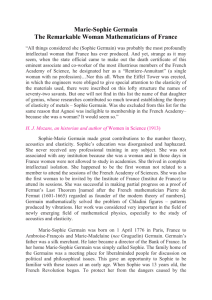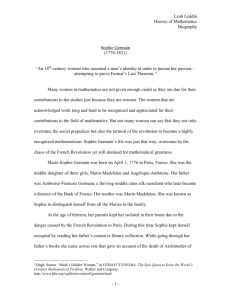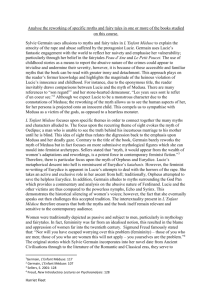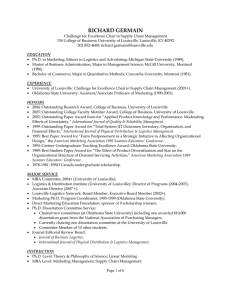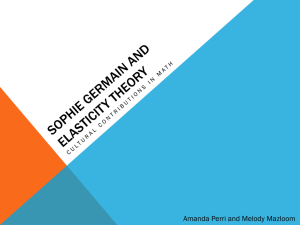File
advertisement
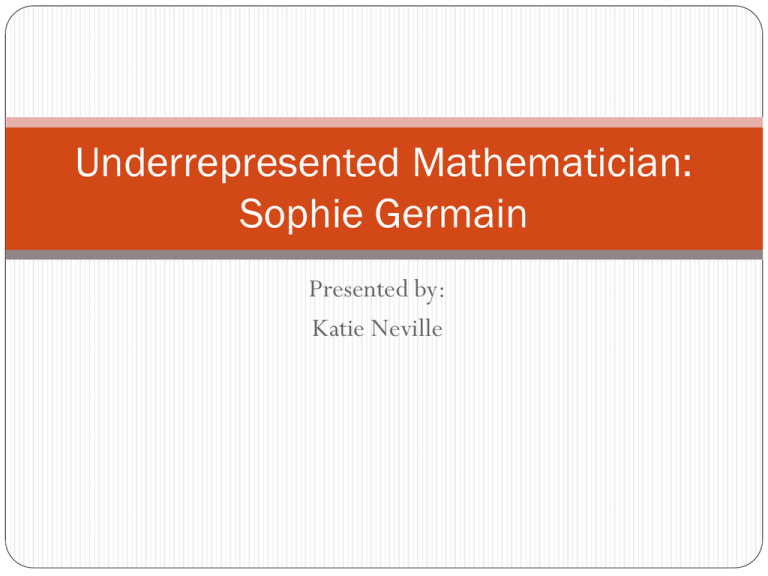
Underrepresented Mathematician: Sophie Germain Presented by: Katie Neville Sophie Germain’s Background Born in 1776 to a middle class family in Paris, France Germain became interested in mathematics when reading an essay on the legend of Archimedes. Legend has it that during the Roman Army invasion, Archimedes was engrossed in mathematics and did not respond to the Roman soldier. Archimedes was shot. Germain taught herself mathematics by reading texts. She was also allowed to borrow lecture notes from the École Polytechnique. To hide her female identity, Germain submitted papers and comments under a pseudonym “Monsieur Le Blanc” Germain’s work in support of Fermat’s Last Theorem Reminder of Fermat’s Last Theorem: If an integer n is greater than 2, then the equation an + bn = cn has no solutions in non-zero integers a, b, and c. For prime exponents less than 100, she showed there could be no solutions relatively prime to the exponent. In addition, she proved the following theorem: if x, y, and z are integers, and x5 + y5 = z5 then either x, y, or z has to be divisible by five This prove eliminated possible solutions of Fermat’s Last Theorem in the case where n = 5. Contributions to the development of Number Theory Germain became interested in number theory and heard about Fermat’s Last Theorem, which she worked on for a number of years. Germain focused on specific prime numbers prime numbers p such that 2p + 1 is also a prime number. Ex: 5; because 2 x 5 + 1 = 11, which is also prime Germain spent much of her time proving that in the case where exponent n, in Fermat’s Last Theorem was equal to one of Germain’s primes, there was no solution. References http://www.agnesscott.edu/lriddle/women/germain.htm http://womenshistory.about.com/library/bio/blbio_sophie _germain.htm http://www.pbs.org/wgbh/nova/proof/germain.html http://en.wikipedia.org/wiki/Sophie_Germain#Contributi ons_to_number_theory

